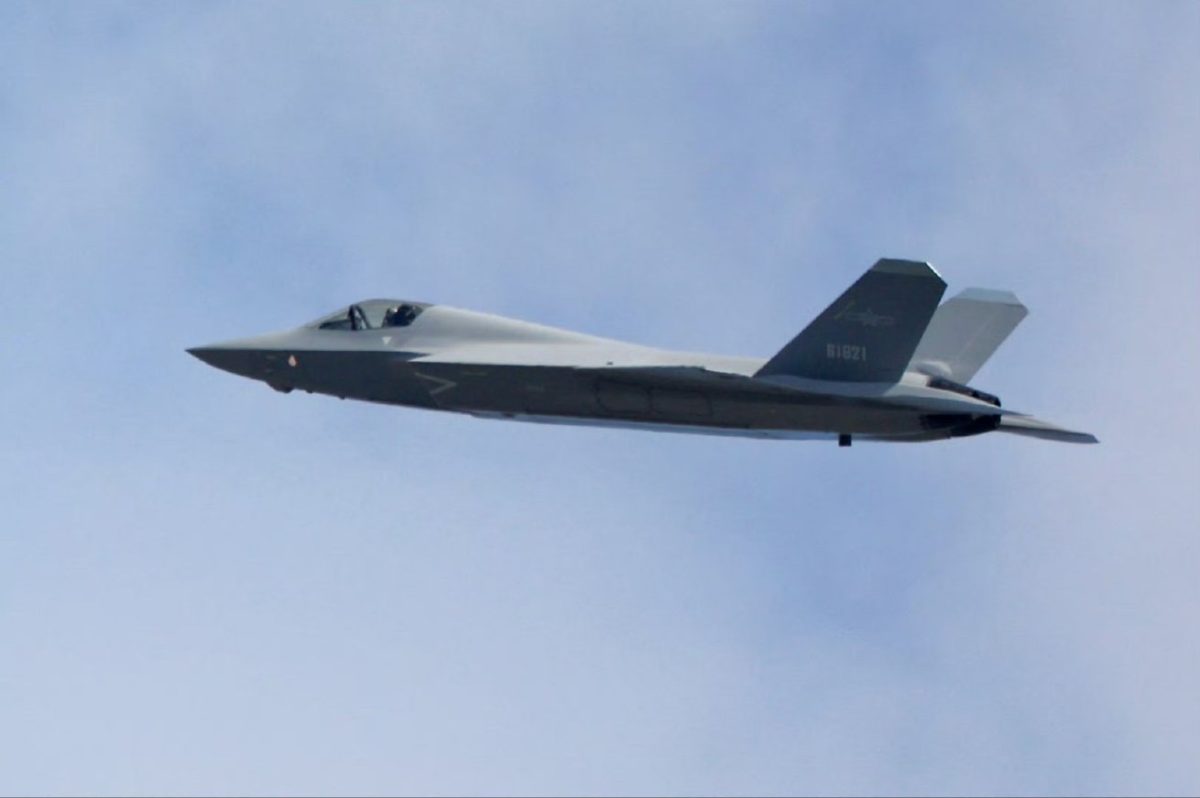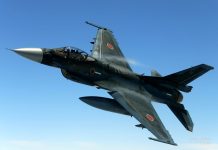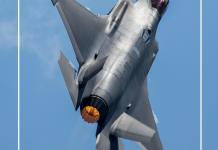For a long time, it was being reported that Pakistan was going to be the first export customer of China’s 5th-generation fighter, the Shenyang J-31 (now designated J-35). Made with technology “inspired” by F-22 and F-35, the Chinese fighter jet was designed to give Pakistan more teeth against India.
However, in a new twist in the plot, Islamabad has stated that there are no plans to acquire the fighter jet.
The announcement comes close on the heels of the four-day war between India and Pakistan, where Chinese weapons saw combat for the first time.
Despite the claims about Chinese weapons saving the day for Pakistan’s armed forces, it seems the cash-strapped country has done some real performance assessment of the Chinese weapons and may have decided against buying Chinese 5th-gen jets.
Interestingly, Pakistan’s volte-face regarding the Chinese J-35 jet comes after the visit of Pakistan Army Chief Field Marshal Asim Munir to the US. US President Trump has praised Munir as “really impressive” and credited him for helping him avert a nuclear conflict with India and Pakistan.
This visit marked a significant high in the US-Pakistan ties, which had ebbed following the Taliban’s swift takeover of Kabul. Washington, caught off guard, scrutinised Pakistan’s historical ties with the group.
The then-US officials, including Secretary of State Antony Blinken and General Mark Milley, publicly questioned Pakistan’s role in providing sanctuary and support to the Taliban over the previous two decades.
A proposed US Senate bill even called for sanctions on governments that supported the Taliban, with Pakistan named explicitly. The Biden administration limited engagement with Pakistan, focusing on counterterrorism and avoiding broader strategic cooperation.
Pakistan is reportedly eyeing advanced US platforms like F-16 Block 70 fighter jets, HIMARS artillery, and air defense systems. Munir’s US visit was followed by Pakistan Air Force Chief Zaheer Ahmed Baber Sidhu’s visit to the Pentagon and the State Department, signalling a strategic thaw in the ties.
There has been an economic fillip to the strengthening of ties between the two countries. The US and Pakistan concluded a critical round of trade negotiations that averted the re-imposition of a 29% tariff on Pakistani exports.
Against the backdrop, Pakistan has issued an official denial regarding any deal with China to purchase 5th-generation stealth fighters. Pakistan’s Defence Minister Khawaja Asif has rejected media reports suggesting that Pakistan is considering the purchase of China’s J-35A fifth-generation stealth fighter jets.
Till June 12, there have been reports about China arming Pakistan with high-tech fighter jets to redraw the balance of power in South Asia. Forty J-35 stealth fighters were reportedly on offer for a price tag of USD 5 billion.
“We are not going to buy this fighter jet from China. This is only in the media. This is good for Chinese defense sales,” Pakistan’s Defense Minister Khawaja Asif said in a televised interview.
In early 2023, Air Chief Marshal Zaheer Ahmed Baber Sidhu confirmed that Pakistan had begun formal negotiations for the stealth jet, stating, “Negotiations have taken place to enable the acquisition of the J-35A, which will soon become part of the Pakistan Air Force.”
In 2024, photographs of Pakistan Air Force pilots training on Chinese J-35s had also surfaced. In fact, PAF was quite pompous about becoming the first air force in South Asia to operate 5th-generation fighter jets.

The Trump administration is trying to wean Pakistan off Chinese military equipment, especially fighter jets. About 80 percent of Pakistan’s defense imports are from China.
In lieu of forgoing the opportunity to operate 5th-generation fighters, Islamabad has requested the upgrade of its F-16 fighter jets and the acquisition of advanced air-to-air missiles from the US.
Pakistan’s Defense Minister’s statement could be a ruse to placate its newfound ally, President Trump, as Islamabad had claimed only a few days ago that the delivery of J-35s was imminent. China has attempted to sweeten the deal by offering a substantial discount on the fighter jets to keep India engaged on its western front.
Another reason for this trouble in paradise could be the dismal performance of Made in China weapons in the military confrontation with India.
In a long post on X titled ‘India’s Operation Sindoor: A Battlefield Verdict on Chinese Weapons- And India’s Victory’, military expert John Spencer said that India not only won the conflict against Pakistan, but it also scored a victory in a technology war with China.
The Chair of Urban Warfare Studies at the Modern War Institute at the US Army Military Academy, Spencer, said: “Operation Sindoor pitted India’s indigenously developed weapons systems against Chinese-supplied platforms fielded by Pakistan. And India didn’t just win on the battlefield — it won the technology referendum. What unfolded was not just retaliation, but the strategic debut of a sovereign arsenal built under the twin doctrines of Make in India and Atmanirbhar Bharat.”
In the four-day conflict, Pakistan relied heavily on Chinese weapons – ranging from China’s JF-17 fighter planes, CH-4 drones to Chinese HQ-9 air defense systems, which were overpowered by Indian indigenous systems, such as BrahMos missiles, Akash and Akashteer air defence systems, and integration of foreign-made fighter planes and air defence systems, such as Rafale fighters, Scalp missiles, and S-400, with Indian systems.
There are other factors at play. A cash-strapped Pakistan has been facing economic woes. Pakistan may be facing fiscal distress in footing the bill for a multi-billion-dollar fighter purchase. Operating under IMF conditions, this move could indicate fiscal restraint.
Pakistan could be playing its ‘usual’ double game, Nitin J Ticku, Managing Editor and Defense expert at EurAsian Times, believes. As it is, Asif’s remarks do not hold much value, as it’s the Pakistani military that is the real authority in Pakistan. Ticku adds that Pakistan’s arch-rival, India, is unlikely to acquire a stealth aircraft anytime soon, so Islamabad might have merely delayed the acquisition.
J-35, A Replica Of F-22 & F-35?
The limited information available about the J-35 suggests that it was designed to provide close air support and air-to-ground bombing capabilities. Its design also suggests that it might have been designed for carrier use. It has now reportedly been inducted into the People’s Liberation Army Air Force.

Many observers have noted the striking resemblance between the FC-31 and the American F-35. The flat tail and twin engines of the J-35 seem to be derived from the F-22, and the front end resembles the F-35.
This doesn’t come as a surprise, as a 2014 “U.S.-China Economic and Security Review Commission” Congressional report cited a Defense Science Board finding that Chinese cyberattacks have siphoned off crucial specifications and technical details of a range of US weapons systems—including the F-35.
The J-35 prototype was powered by two Russian RD-93 engines, with an afterburning thrust of 2 × 81 kN (thrust-to-weight ratio: 4.82 dry, 7.9 afterburning).
The engines were later replaced with new, stealthy WS-13 engines from Guizhou Aircraft Industry Corporation. The engines could be the chink in J-35s armor. Beijing had offered the same engine for the technically troubled JF-17 exported to the PAF, but Pakistan refused.
The Shenyang J-35 stealth fighter can be equipped with one internal cannon, two internal weapons bays in the fuselage, and three payload hardpoints on each of its two wings. Each internal weapons bay can accommodate up to two missiles.
The J-35 could carry larger missiles, such as the YJ-12 anti-ship missile, under its wings, but like the American F-35, at the cost of its stealth.
The Pakistani variant of the J-35 is likely to be equipped with the PL-17 (Very Long-Range Air-to-Air Missile), a significant upgrade over the Chinese PL-15E. PL-15E, claimed by Pakistan, was used in the downing of Indian fighter jets. The PL-17 with a range of 400 km will give J-35 the capability “to kill from the shadows”.




